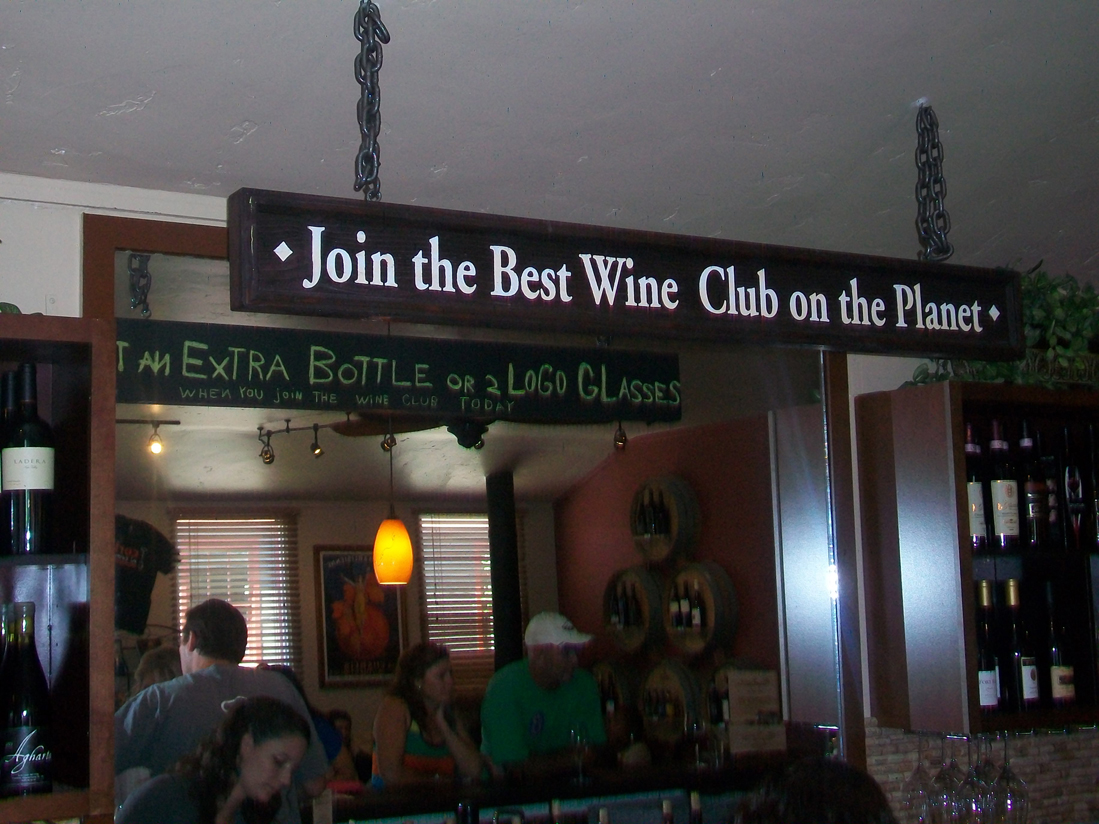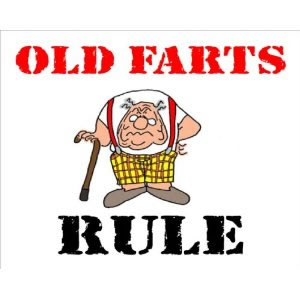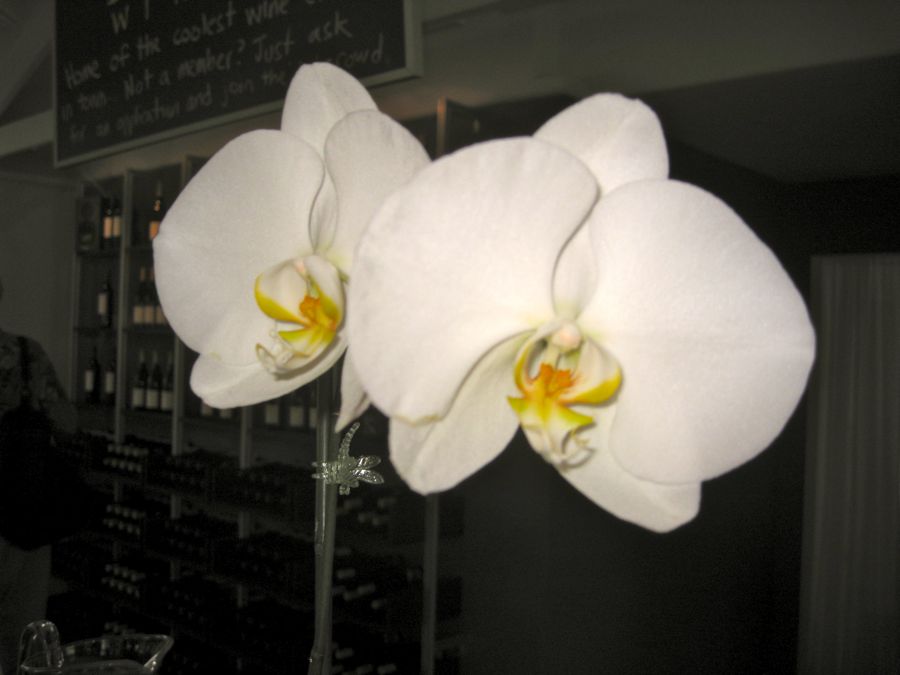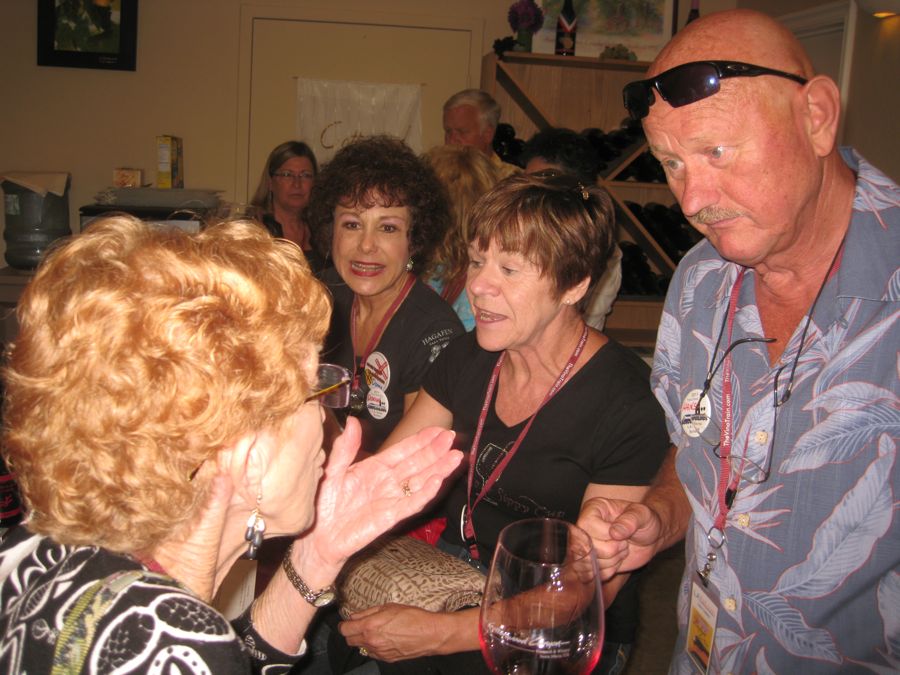From Platform To Winery In 60 Seconds... (Page Eight)

Corks and Crowns... First stop

Corks in the glass (Courtesy: R. Duda)
Corks n' Crowns
32 Anacapa Street
Santa Barbara, CA
Phone Number: 805 845-8600
Website: http://www.corksandcrowns.com
Did You Know? -
The crown cork (also known as a crown cap or just a crown), the first form of bottle cap, was invented by William Painter in 1891 in Baltimore. The company making it was originally called the Bottle Seal Company, but it changed its name with the almost immediate success of the crown cork to the Crown Cork and Seal Company. It still informally goes by that name, but is officially Crown Holdings. The Patent was granted in 1892, as US patent 468,258. The crown cork was the first highly successful disposable product (it can be resealed but not easily). This inspired King C. Gillette to invent the disposable razor when he was a salesman for the Crown Cork Company. The company still survives, producing many forms of packaging.
Prior to the invention of the crown cork bottle stopper, soda bottles had ordinary cork bottle stoppers and often had rounded bottoms so they could not be stored standing upright. The reason for this is corks have a tendency to dry out and shrink, which allows the gas pressure in the bottle to cause the cork to "pop." Storing bottles on their side prevents the corks from drying out and "popping." After the invention of the crown cork bottle stopper, this problem was eliminated and soda bottles could be stored standing upright.
Crown corks are collected by people around the world who admire the variety of designs and relative ease of storage.
Collectors tend to prefer the term crown cap over corks. In Mexico these are called Corcholatas, in Spain as well as in South America the name chapas is used, while in the Philippines the term tansan is used.


Go ahead... It is safe

Sue smells to wine whiffing out from the door

Neat mirror

Our first winery had a great mirror (Courtesy: R. Duda)


The Gentlemen's Lounge???

Our group visited this winery a bit later in the day (Courtesy: R, Duda)
Did You Know? - The term gentleman (from Latin gentilis, belonging to a race or gens, and man, cognate with the French word gentilhomme, the Spanish gentilhombre, the Italian gentil uomo or gentiluomo and the Portuguese gentil-homem), in its original and strict signification, denoted a well-educated man of good family and distinction, analogous to the Latin generosus (its invariable translation in English-Latin documents).
In this sense, the word equates with the French gentilhomme ("nobleman"), which latter term was, in Great Britain, long confined to the peerage. The word gentry derives from the old term Adel, but without the strict technical requirements of those traditions, such as quarters of nobility.

Frank and Sue try the beer....
Did You Know? - Beer is one of the world's oldest beverages, with the history of beer dating back to the 6th millennium BC, and being recorded in the written history of Ancient Iraq. The earliest Sumerian writings contain references to beer. A prayer to the goddess Ninkasi known as "The Hymn to Ninkasi" serves as both a prayer as well as a method of remembering the recipe for beer in a culture with few literate people.
Rumor has it that Frank was humming "The Hymn to Ninkasi" during the train ride home.

Donna and the world famous smile

Notice the lizzard... She saved the little guy and then found out it was plastic

Kersten, Sue, Paul & Dinna (Courtesy: Hans & Kersten)

Slugging it down and ready to move on (Courtesy: Hans & Kersten)

Mr. Lizzard wants a red (Courtesy: V. Kuhn)


Slurp is NOT the sound of a serious wine taster
Slurp: To eat or drink (something) noisily
We Were Asked To Leave And Go Next Door Thanks To Donna's Slurping


The three musketeers



Z-z-z-z-z-z-z-z-z-z-Zaitz!!!!
Three Sniffs Of The Fountain

ACIDIC: Used to describe wines whose total acid is so high that they taste tart or sour and have a sharp edge on the palate.
AERATION: The process of letting a wine "breathe" in the open air, or swirling wine in a glass. It's debatable whether aerating bottled wines (mostly reds) improves their quality. Aeration can soften young, tannic wines; it can also fatigue older ones.
AFTERTASTE: The taste or flavors that linger in the mouth after the wine is tasted, spit or swallowed. The aftertaste or "finish" is the most important factor in judging a wine's character and quality. Great wines have rich, long, complex aftertastes.
AGGRESSIVE: Unpleasantly harsh in taste or texture, usually due to a high level of tannin or acid.
ALCOHOLIC: Used to describe a wine that has too much alcohol for its body and weight, making it unbalanced. A wine with too much alcohol will taste uncharacteristically heavy or hot as a result. This quality is noticeable in aroma and aftertaste.
APPEARANCE: Refers to a wine's clarity, not color.
AROMA: Traditionally defined as the smell that wine acquires from the grapes and from fermentation. Now it more commonly means the wine's total smell, including changes that resulted from oak aging or that occurred in the bottle- good or bad. "Bouquet" has a similar meaning.
ASTRINGENT: Describes a rough, harsh, puckery feel in the mouth, usually from tannin or high acidity, that red wines (and a few whites) have. When the harshness stands out, the wine is astringent.
AUSTERE: Used to describe relatively hard, high-acid wines that lack depth and roundness. Usually said of young wines that need time to soften, or wines that lack richness and body.
AWKWARD: Describes a wine that has poor structure, is clumsy or is out of balance.

BACKBONE: Used to denote those wines that are full-bodied, well-structured and balanced by a desirable level of acidity.
BACKWARD: Used to describe a young wine that is less developed than others of its type and class from the same vintage.
BALANCE: A wine has balance when its elements are harmonious and no single element dominates.
BITE: A marked degree of acidity or tannin. An acid grip in the finish should be more like a zestful tang and is tolerable only in a rich, full-bodied wine.
BITTER: Describes one of the four basic tastes (along with sour, salty and sweet). Some grapes--notably Gewurztraminer and Muscat--often have a noticeable bitter edge to their flavors. Another source of bitterness is tannin or stems. If the bitter quality dominates the wine's flavor or aftertaste, it is considered a fault. In sweet wines a trace of bitterness may complement the flavors. In young red wines it can be a warning signal, as bitterness doesn't always dissipate with age. Normally, a fine, mature wine should not be bitter on the palate.
BLUNT: Strong in flavor and often alcoholic, but lacking in aromatic interest and development on the palate.
BODY: The impression of weight or fullness on the palate; usually the result of a combination of glycerin, alcohol and sugar. Commonly expressed as full-bodied, medium-bodied or medium-weight, or light-bodied.
BOTTLE SICKNESS: A temporary condition characterized by muted or disjointed fruit flavors. It often occurs immediately after bottling or when wines (usually fragile wines) are shaken in travel. Also called bottle shock. A few days of rest is the cure.
BOUQUET: The smell that a wine develops after it has been bottled and aged. Most appropriate for mature wines that have developed complex flavors beyond basic young fruit and oak aromas.
BRAWNY: Used to describe wines that are hard, intense, tannic and that have raw, woody flavors. The opposite of elegant.
BRIARY: Describes young wines with an earthy or stemmy wild berry character.
BRIGHT: Used for fresh, ripe, zesty, lively young wines with vivid, focused flavors.
BRILLIANT: Describes the appearance of very clear wines with absolutely no visible suspended or particulate matter. Not always a plus, as it can indicate a highly filtered wine.
BROWNING: Describes a wine's color, and is a sign that a wine is mature and may be faded. A bad sign in young red (or white) wines, but less significant in older wines. Wines 20 to 30 years old may have a brownish edge yet still be enjoyable.
BURNT: Describes wines that have an overdone, smoky, toasty or singed edge. Also used to describe overripe grapes.
BUTTERY: Indicates the smell of melted butter or toasty oak. Also a reference to texture, as in "a rich, buttery Chardonnay."
CEDARY: Denotes the smell of cedar wood associated with mature Cabernet Sauvignon and Cabernet blends aged in French or American oak.
CHEWY: Describes rich, heavy, tannic wines that are full-bodied.
CIGAR BOX: Another descriptor for a cedary aroma.
CLEAN: Fresh on the palate and free of any off-taste. Does not necessarily imply good quality.
CLOSED: Describes wines that are concentrated and have character, yet are shy in aroma or flavor.
CLOUDINESS: Lack of clarity to the eye. Fine for old wines with sediment, but it can be a warning signal of protein instability, yeast spoilage or re-fermentation in the bottle in younger wines.
COARSE: Usually refers to texture, and in particular, excessive tannin or oak. Also used to describe harsh bubbles in sparkling wines.
COMPLEXITY: An element in all great wines and many very good ones; a combination of richness, depth, flavor intensity, focus, balance, harmony and finesse.
CORKED: Describes a wine having the off-putting, musty, moldy-newspaper flavor and aroma and dry aftertaste caused by a tainted cork.
DECANTING: Process for separating the sediment from a wine before drinking. Accomplished by slowly and carefully pouring the wine from its bottle into another container.

Round:
Describes a wine
that has a good balance of fruit and tannins,
with good body as well.
Short:
Term for a wine
which does not remain on the palate
after swallowing - see 'finish.'
Simple:
Used to describe a wine
that has few characteristics
which follow the initial impression.
Not necessarily a disparaging term,
it's often used to describe
inexpensive, young wine.
Smoky:
Term used to describe
a subtle wood-smoke aroma and
also some wines that seem
to pick up a smoky aroma from
the earth in which they are grown.
Soft:
Term to describe a wine
with low acid and gentle tannins.
Spicy:
Term to describe flavors that are spicy.
Now that wasn't too hard to figure out was it.
Supple:
Describes a wine with well-balanced tannins
and fruit characteristics.
Tannin:
Adds dryness and astringency.
Handy if you know
what astringency means.
Toasty:
Often used to describe a white wine
with a nice hint of the wooden barrel
in which the wine was stored.
Sweeter wines are rarely described this way.
Vintner:
Wine Merchant

Yup!

OMG... They got two more youngsters this year

The girls are boy magnets

Paul studies the materials

He is a pointer


Now they attracted the "Old Farts"






Bob found the toy box


We Went Next Door To Kunin


Bob emptied the place with a mighty howl

The beach is two blocks away

Serious slurping now underway





New friends... Monica, Hans, Ed, and Bunny



Ah,,,, Nice hat!

Father and Son

Looking good


Talking heads




The Famous Phone Booth

Mighty mouse

Donna look funny after re-emerging from the magic booth

Ah.... Frank... There is NO half-moon on the door.. Dear me

The phone works...

We can do it...
Cottonwood Here We Come

Santa Barbara Tasting Room now open!
224 Anacapa St., Suite 1A
Santa Barbara, CA 93101
(805) 963-1221

One last drink before lunch

Frank knows something that he is not sharing.... yet

Bob and Sue study the maps

Greg is getting ready to entertain

Glasses up for a toast


Greg provides a little culture to the group by regaling Shakespeare

The attendant was amazed and wanted to take him home...




Nancy and Hans is major discussion

"Dear... It's lunch time.... Perhaps you could get a glass of wine there"

"Hey... I brought lunch for everyone!"
